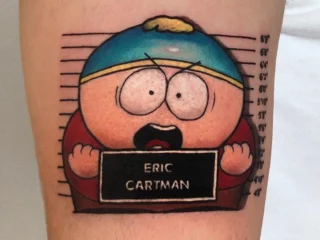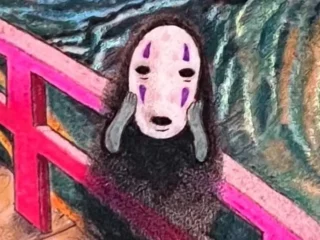Inked Mag Staff
January 28th, 2015
Who Had the First Tattoos?
We live in a fast-paced world where everything seems to be constantly changing. Considering how unthinkable our entire society would be to someone who lived only 100 years ago, it’s…
We live in a fast-paced world where everything seems to be constantly changing. Considering how unthinkable our entire society would be to someone who lived only 100 years ago, it’s easy to come to the assumption that other than the basic human needs we would have nothing in common with ancient peoples. But that’s not true, we share one very intriguing bond—we still tattoo ourselves.
One of the things that makes studying tattoo art and history so interesting is that while its style and methods are ever evolving along with the rest of society, its roots are firmly planted in traditions that are hundreds, if not thousands, of years old. This led us to ask ourselves which society was the first to embrace the art of tattooing?
The key word in that question is “art.” It’s easy for us to look back into history to find one of the first examples of tattooing. Otzi the Iceman, who died in roughly 4,000 B.C., is often thought to be the earliest known instance of a tattooed person. The problem is that researchers believe that his tattoos were not done for decorative purposes. Considering that the majority of the fifty plus tattoos that Otzi had on his body were simple lines on locations that were often the point of stress*, many believe that his tattoos were a form of therapy. It is also interesting to note that Otzi’s tattoos were not created with a needle. Instead a process involving rubbing charcoal into a fine incision in the skin created the tattoos.
As awesome as it is that Otzi was tattooed we are more interested in people who saw tattooing as an art, just like we do today. In other words, we’re looking for someone who had tattoo designs slightly more complicated than a couple of hash marks on the ankle. Enter the Siberian Ice Maiden.
Discovered by excavators in a remote region of Russia near the border of Kazakhstan in 1993 the body of the Siberian Ice Maiden, also known as the Princess of Ukok, bore multiple tattoos. Her tattoos were not simple lines either. On her shoulder she had a tattoo that was clearly a design of a deer. She also had tattoos on her wrist and thumb that appear to be for ornamental reasons. The Siberian Ice Maiden is thought to have died sometime during the 5th century BC, making her even older than the more famous Otzi.
The Siberian Ice Maiden is thought to have been part of the Pazyryk people, a steppe tribe that thrived in the area that is now China, Russia, Mongolia and Kazakhstan. Most of the Pazyryk remains that have been excavated have had tattoos. When excavating Pazyryk tombs archaeologists have not found any tattoo tools, but they have recovered fine needles that were used for embroidery that could have been used for tattooing, according to the journal Archaeology, Ethnology and Anthropology for Eurasia.

Moving forward a couple thousand years we come to the Pict people. The Picts were a Celtic tribe native to Scotland around 100 BC, and were known to be both heavily tattooed and also into scarification. Evidence of this comes primarily from the writings of Julius Caesar—the Romans clashed with the Picts during the Gallic Wars around 54 BC.
Unfortunately, when it comes to some of the places we normally associate with the roots of tattooing we don’t have hard data as to when the art originated. The word “tattoo” comes from the Polynesian word “tatau” but we do not know when tattooing became a tradition in Polynesia. Interestingly we don’t even know which region of the Polynesian islands spawned the art of tattooing. The Samoans credit the Fijians for creating tattoos, the Fijians credit the Samoans and the Maori credit the underworld, according to The Encyclopedia of Body Adornmentby Margo DeMello.
We run into a similar problem when trying to pinpoint when tattooing became an art form in Japan. Historians believe that tattooing may have taken place in Japan around 5,000 B.C. (about the same time period that the Siberian Ice Maiden lived) but no solid evidence of this has been found. Clay figurines from the time period often have markings drawn on their bodies and faces so some historians believe that these were a representation of tattooed people. The first actual evidence of Japanese tattooing comes from Chinese historical accounts from roughly 300 B.C. Tattooing is thought to be relatively prevalent in Japan for roughly the next 1,000 years; by 700 A.D. they carried a very negative stigma as tattoos were used primarily for punishing criminals.
All of this is a very round about way of saying that we aren’t really sure which culture was the first one to treat tattoos as an art form and it doesn’t look like we are ever going to have a definitive answer. What we do know is that tattoos almost certainly didn’t come from one specific place. Instead, tattoos originated in cultures that had little to no contact with each other all over the globe at roughly the same time, which is pretty cool when you think about it. You’d be hard-pressed to find any other similarities between the steppe cultures of Siberia, Celtic tribes in Scotland, and island societies like Samoa. It’s almost as if tattooing was so ingrained in our DNA that once a society discovered the technology that would allow them to decorate their skin they did so.
So, the next time someone makes a wiseass remark and asks what your parents think about your tattoos just say that your parents are proud that you’re keeping alive a 5,000-year-old family tradition.
*Most of the lines coincide with the same skin lines that are used in acupuncture. This is especially interesting considering that Otzi predates when most historians believe acupuncture started by 2,000 years. This theory has also been brought into doubt by a new tattoo that was discovered near one of the ribs of Otzi, the first of his tattoos not to be located on a joint or pressure point. Dr. Albert Zink says that it is possible that the tattoo was created there in order to alleviate chest pain, according to the Huffington Post. Now that Zink and his team believe that they have identified all of the tattoos the next step is to figure out why Otzi had them.

Editor's Picks
Bridging Classical Art and Modern Tattooing
Esteban Rodriguez brings the discipline of classical fine art to the living canvas of skin, creating hyper-realistic tattoos that merge technical mastery with emotional depth.
Show Your Ink Fashions Brings Custom Style to Tattoo Culture
Show Your Ink Fashions creates custom shirts designed to showcase your tattoos as wearable art, blending fashion with personal expression.
The Ultimate “Superman” Tattoo Roundup: Just in Time for Superman’s Return to Screens
With Superman’s big return to theaters, fans are revisiting some of the most iconic ink inspired by the Man of Steel.














